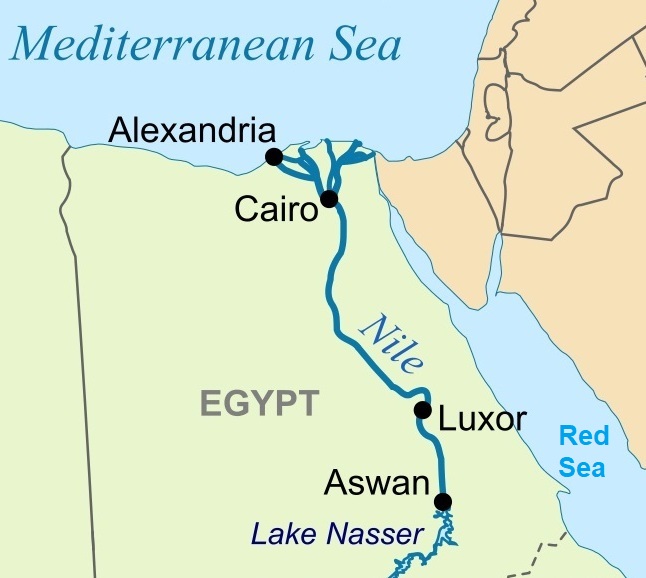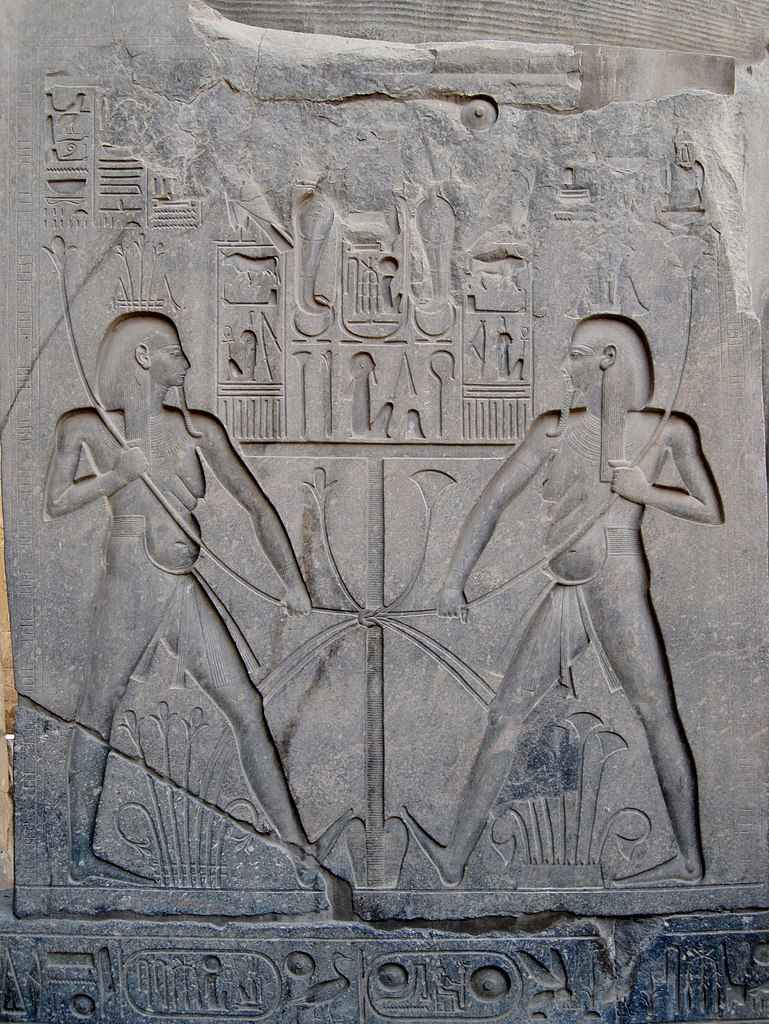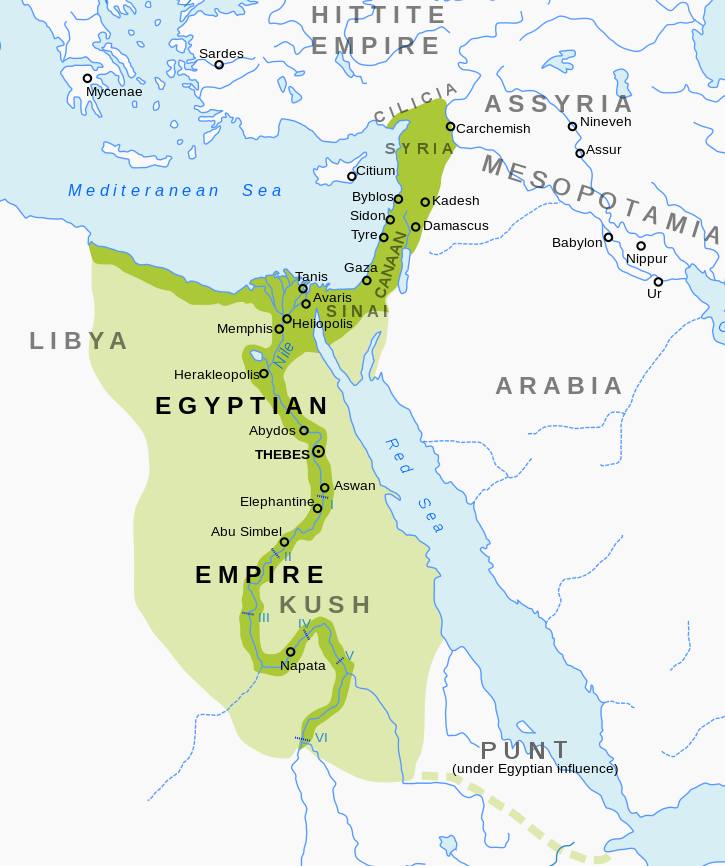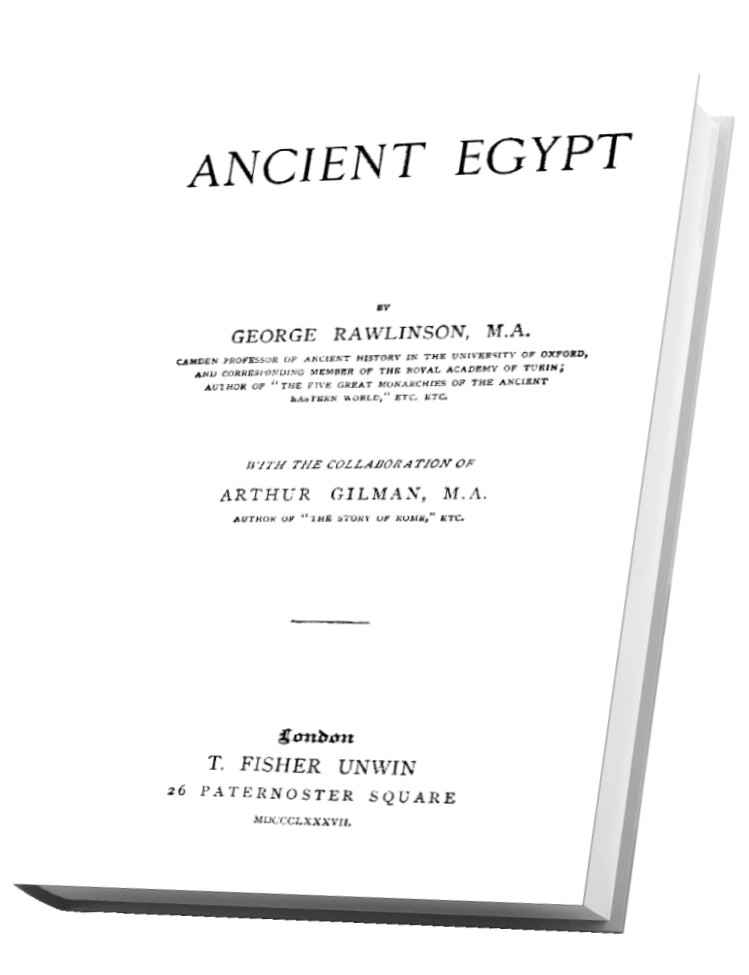Egypt (Before Arab Conquest)
Egypt has one of the longest histories of any country and is considered a cradle of civilization. Ancient Egypt was one of the earliest places to develop writing, agriculture, urbanization, organized religion and central government. Its heritage can be traced back to 6000-4000 BCE.
From about 6000 BCE, the land of Egypt was settled with autonomous villages concentrated in two parts of the Nile River: the upper part around present-day Luxor, and the lower part around present-day Cairo. The designation “upper” and “lower” was in reference to the elevation of the Nile River: the highland region is called “upper” and the region near Mediterranean Sea is called “lower.” Around 3150 BCE the regions were united (possibly by a king named Narmer, commonly known as Menes). It started a period of approximately 250 years called the First Dynasty. Below is a map showing the location of the cities:

Below is a scene at a temple in Luxor symbolizing unification

Dividing ancient Egyptian history into dynasties originated from Egyptian historian Manetho who lived during the early third century BCE. He wrote a book called Aegyptiaca and divided the history of Egypt into 30 dynasties. However, he did not use the term in the modern sense based on bloodlines; instead, he introduced new dynasties whenever he detected some sort of discontinuity, whether geographical or genealogical. Modern scholars group Manetho’s thirty dynasties into “Kingdoms.” During certain chaotic times, e.g., kingship was divided or the political and social conditions deteriorated, these eras are called “Intermediate Periods.” Today the generally agreed chronology is divided as follows, beginning from 3100 BCE:
The Archaic Period (414 years; 3100-2686 BCE; 1st and 2nd Dynasties)
The Old Kingdom (505 years; 2686-2181 BCE; 3rd to 6th Dynasty),
The First Intermediate Period (126 years; 2181-2055 BCE; 7th to 10th Dynasty),
The Middle Kingdom (405 years; 2055-1650 BCE; 11th to 12th Dynasty),
The Second Intermediate Period (100 years; 1650-1550 BCE; 13th to 17th Dynasty),
The New Kingdom (481 years; 1550-1069 BCE; 18th to 20th Dynasty),
The Third Intermediate Period (405 years; 1069-664 BCE; 21st to 25th Dynasty),
The Late Period (332 years; 664-332 BCE; 26th to 31st Dynasty),
The Ptolemaic Period (302 years; 332 BCE to ending at the death of Cleopatra VII in 30 BCE).
After Ptolemaic period Egypt was ruled by the Roman empire for about 600 years until driven out in 641 CE by the Arabs during Rashidun Caliphate.
The three Kingdoms (Old, Middle and New) are considered the “golden ages” of Egypt. For a long time, Egyptians were contended with living along the Nile River. It was during the New Kingdom that Egypt expanded from its Nile River home to the east coast of the Mediterranean Sea. However, the territories of Egypt at its largest extend were small compared to neighboring countries. Below is a map of the Egyptian empire during the New Kingdom around 15th century BCE:

Although Egypt was not a military power, it had an advanced civilization and left behind as part of its legacy troves of treasures. Brief discussion of some of them can be found by clicking on the following links: medicine, mummies, pyramids and writing.
Below are general books on ancient Egypt:
(i) Ancient Egypt (file size approximately 25 MB)

(ii) Social Life in Ancient Egypt
